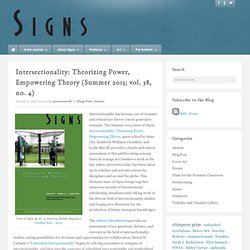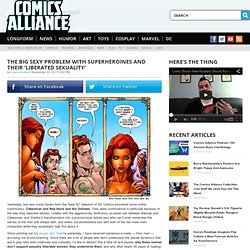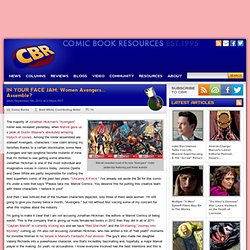

Black feminism and intersectionality. “Although we are in essential agreement with Marx’s theory as it applied to the very specific economic relationships he analyzed, we know that his analysis must be extended further in order for us to understand our specific economic situation as Black women.” —the Combahee River Collective Statement, 19771 “The concept of the simultaneity of oppression is still the crux of a Black feminist understanding of political reality and, I believe, one of the most significant ideological contributions of Black feminist thought.”
—Black feminist and scholar Barbara Smith, 19832 Black legal scholar Kimberlé Crenshaw coined the term “intersectionality” in her insightful 1989 essay, “Demarginalizing the Intersection of Race and Sex: A Black Feminist Critique of Antidiscrimination Doctrine, Feminist Theory and Antiracist Politics.”3 The concept of intersectionality is not an abstract notion but a description of the way multiple oppressions are experienced. “Ain’t we women?” Danielle L. Intersectionality: Theorizing Power, Empowering Theory (Summer 2013; vol. 38, no. 4) Intersectionality has become one of feminist and critical race theory’s most generative concepts.

The Summer 2013 issue of Signs, Intersectionality: Theorizing Power, Empowering Theory, guest edited by Sumi Cho, Kimberlé Williams Crenshaw, and Leslie McCall, provides a timely and critical assessment of this pathbreaking concept. Since its coinage in Crenshaw’s work in the late 1980s, intersectionality has been taken up by scholars and activists across the disciplines and around the globe.
This thematic issue of Signs brings together numerous strands of intersectional scholarship, simultaneously taking stock of the diverse field of intersectionality studies and forging new directions for the production of future insurgent knowledges. The editors’ introduction provides an assessment of key questions, debates, and currents in the field of intersectionality studies, noting possibilities for its future and opportunities for collaboration.
Devon W. Intersectionality as buzzword. A sociology of science perspective on what makes a feminist theory successful Abstract Since its inception, the concept of `intersectionality' — the interaction of multiple identities and experiences of exclusion and subordination — has been heralded as one of the most important contributions to feminist scholarship.

Despite its popularity, there has been considerable confusion concerning what the concept actually means and how it can or should be applied in feminist inquiry. In this article, I look at the phenomenon of intersectionality's spectacular success within contemporary feminist scholarship, as well as the uncertainties and confusion which it has generated. Drawing upon insights from the sociology of science, I shall show how and why intersectionality could become a feminist success story. The Big Sexy Problem with Superheroines and Their 'Liberated Sexuality' Yesterday, two new comic books from the “New 52″ relaunch of DC Comics provoked some online controversy: Catwoman and Red Hood and the Outlaws.

They were controversial in particular because of the way they depicted women, notably with the aggressively fanfictiony on-panel sex between Batman and Catwoman, and Starfire’s transformation into a promiscuous tabula rasa who can’t even remember the names of the men she sleeps with, and seeks out emotionless sex with both of the two male main characters while they essentially high five about it. Since pointing out my issues with Starfire yesterday, I have received numerous e-mails — from men — accusing me of slut-shaming. And that is why books like Catwoman and Red Hood make me so goddamn angry. Let’s start with Catwoman. The money shot that most people have latched onto in Catwoman, however, is the one where Batman and Catwoman have sex on a rooftop.
Here’s the question, though: Why? The answer is nothing. In Your Face Jam: Women Avengers... Assemble? Marvel revealed most of its new "Avengers" roster yesterday featuring just three women The majority of Jonathan Hickman's "Avengers" roster was revealed yesterday, when Marvel gave us a peak at Dustin Weaver's absolutely amazing triptych of covers.

Among the roster assembled are stalwart Avengers, characters I now claim among my favorites thanks to a certain blockbuster, some New Avengers and two longtime favorite mutants of mine that I'm thrilled to see getting some attention. Jonathan Hickman is one of the most individual and imaginative voices in comics today. Jerome Opeña and Dean White are partly responsible for crafting the best superhero comic of the past two years, "Uncanny X-Force. " I've already set aside the $4 for this comic. And then I was noticed that of the fourteen characters depicted, only three of them were women. I'm going to make it clear that I am not accusing Jonathan Hickman, the editors or Marvel Comics of being sexist.
Women read comics. Feminism, Education and the plight of the teenage girl.